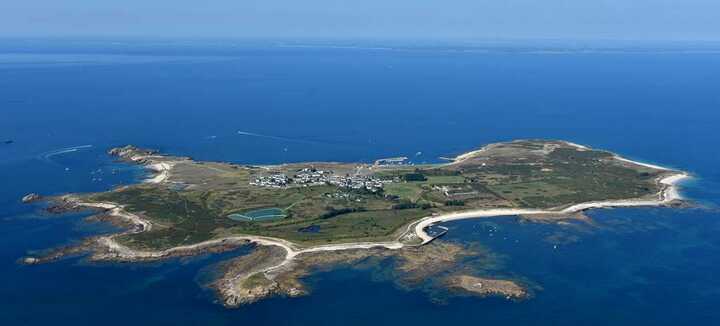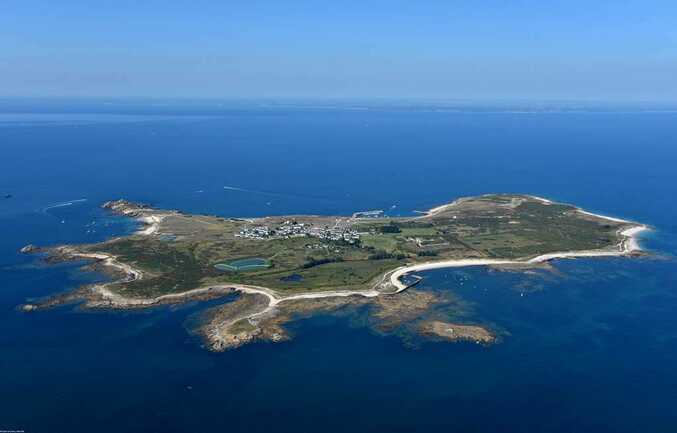
Hoedic - Tour de l'Île
Features of the route
Difficulty
Easy
Length
02:00:00
Distance
8km
Municipality of departure
Hœdic
Municipality of arrival
Hœdic
Step by step: Follow the coastal path.
Departure point: From Port D'Argol, turn right along the coastal path behind the ferry terminal.
1- On the left, see the fosse du Douet (former wash-house) and, on the right, the Gadouen cove, Port l'Église and the former lifeboat house.
2- After the granite coast, not far from Port Neuf, a causeway built by German prisoners collapses on the shore. Archaeologists Saint-Just and Marthe Péquart discovered Mesolithic tombs which, along with Téviec, make up the largest Mesolithic necropolis in Europe (one of the skeletons is in the Musée de la Préhistoire, Carnac). Micaschists sparkle in the Men Du cove to the north.
3- The Pointe du Vieux Château is a fortified spur that marks the landscape and dates back to the Iron Age. An alignment of menhirs can also be seen on this point. In the days of sailing, fleets would take shelter in the northern harbor, known as the "Chambre d'Hoedic", before attacking Belle-Île or the mainland.
4- The Pointe de Caspéraquiz, opposite the Calvary of Port Blanc, features piles of stones.
5- Hoedic's 1st village was located at Paluden. An alignment of menhirs can be seen to the south of the hamlet.
6- La Maison perdue was the quarrymen's shelter during the construction of the Fort. The Beg Melen turret can be reached at low tide.
7- The Fort (1853) was disused shortly after its construction. It now houses a gîte d'étape, associations and an exhibition on the island's heritage.
8- Gulls nest at Grand Mulon.
9- The Menhir de la Vierge and the Dolmen de la Croix, classified as Historic Monuments, have become processional sites (18th century). A statue of the Virgin Mary on top of the Menhir, no longer extant, and the cross on the cover slab of the dolmen, buried under its tumulus, show the Christianization of these megaliths. A recumbent menhir can also be seen to the north-east of the site.
10- Treh Signago was a shelter for Sinagots and fishing boats from the Gulf of Morbihan.
11- Pointe Beg Lagad is home to a Vauban fort.
12- The village's old houses are low-lying longères. The church, rebuilt in 1853, overlooks the island and the sea, a little way out of town. The old semaphore (1861) houses a gîte.
Departure point: From Port D'Argol, turn right along the coastal path behind the ferry terminal.
1- On the left, see the fosse du Douet (former wash-house) and, on the right, the Gadouen cove, Port l'Église and the former lifeboat house.
2- After the granite coast, not far from Port Neuf, a causeway built by German prisoners collapses on the shore. Archaeologists Saint-Just and Marthe Péquart discovered Mesolithic tombs which, along with Téviec, make up the largest Mesolithic necropolis in Europe (one of the skeletons is in the Musée de la Préhistoire, Carnac). Micaschists sparkle in the Men Du cove to the north.
3- The Pointe du Vieux Château is a fortified spur that marks the landscape and dates back to the Iron Age. An alignment of menhirs can also be seen on this point. In the days of sailing, fleets would take shelter in the northern harbor, known as the "Chambre d'Hoedic", before attacking Belle-Île or the mainland.
4- The Pointe de Caspéraquiz, opposite the Calvary of Port Blanc, features piles of stones.
5- Hoedic's 1st village was located at Paluden. An alignment of menhirs can be seen to the south of the hamlet.
6- La Maison perdue was the quarrymen's shelter during the construction of the Fort. The Beg Melen turret can be reached at low tide.
7- The Fort (1853) was disused shortly after its construction. It now houses a gîte d'étape, associations and an exhibition on the island's heritage.
8- Gulls nest at Grand Mulon.
9- The Menhir de la Vierge and the Dolmen de la Croix, classified as Historic Monuments, have become processional sites (18th century). A statue of the Virgin Mary on top of the Menhir, no longer extant, and the cross on the cover slab of the dolmen, buried under its tumulus, show the Christianization of these megaliths. A recumbent menhir can also be seen to the north-east of the site.
10- Treh Signago was a shelter for Sinagots and fishing boats from the Gulf of Morbihan.
11- Pointe Beg Lagad is home to a Vauban fort.
12- The village's old houses are low-lying longères. The church, rebuilt in 1853, overlooks the island and the sea, a little way out of town. The old semaphore (1861) houses a gîte.


